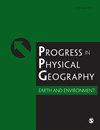伊朗的水政策:环境不公与边缘化
IF 3.6
3区 地球科学
Q2 GEOGRAPHY, PHYSICAL
Progress in Physical Geography-Earth and Environment
Pub Date : 2024-04-27
DOI:10.1177/03091333241252523
引用次数: 0
摘要
水具有各种政治经济动态。缺水会导致冲突,是伊朗环境危机的核心所在。有关伊朗水危机的文献指出了这一问题在多层面环境退化、社区解体以及国家-社会和社区间冲突方面的影响。伊朗 8500 万居民中约有 2800 万人居住在缺水地区,这种情况被称为 "水资源破产"。全国各地的缺水情况各不相同。高原中部地区是伊朗主要工业的所在地,也是缺水最严重的地区。然而,水资源丰富的地区也受到了影响。这些地区被称为 "捐资盆地",由于政府为解决中部地区缺水问题而进行了密集且不成比例的盆地间调水和其他工程干预,这些地区遭受了不同形式的水危机。国家与伊朗周边地区的次等社区之间形成了不对称和冲突性的权力关系。本文认为,这构成了环境种族主义,其特点是捐助地区社区的多层次贫困化和不可持续的发展。本文章由计算机程序翻译,如有差异,请以英文原文为准。
Iran’s water policy: Environmental injustice and peripheral marginalisation
Water exhibits various politico-economic dynamic. Water scarcity can lead to conflicts, and it lies at the core of Iran’s environmental crises. The literature on Iran’s water crisis indicates the effects of this issue in terms of multidimensional environmental degradation, community disintegration, and state-society and intercommunal conflict. Approximately 28 million of Iran’s 85 million residents reside in water-stressed areas, a situation identified as ‘water bankruptcy’. The water shortage is experienced differently across the country. The plateau’s central regions, home to Iran’s major industries, are where the worst water deficit is occurring. However, regions with abundant water resources have also been impacted. These regions – known as ‘donor basins’ – due to intensive and disproportional inter-basin water transfer and other engineering interventions deployed by the Government to deal with the water shortage of the central regions, suffer from a different form of water crisis. A condition of asymmetrical and conflictual power relations between the state and subaltern communities in Iran’s peripheral regions has been created. This paper argues that this constitutes environmental racism, characterised by multilayered impoverishment and unsustainable development among communities in the donor regions.
求助全文
通过发布文献求助,成功后即可免费获取论文全文。
去求助
来源期刊
CiteScore
7.20
自引率
5.10%
发文量
53
审稿时长
>12 weeks
期刊介绍:
Progress in Physical Geography is a peer-reviewed, international journal, encompassing an interdisciplinary approach incorporating the latest developments and debates within Physical Geography and interrelated fields across the Earth, Biological and Ecological System Sciences.

 求助内容:
求助内容: 应助结果提醒方式:
应助结果提醒方式:


